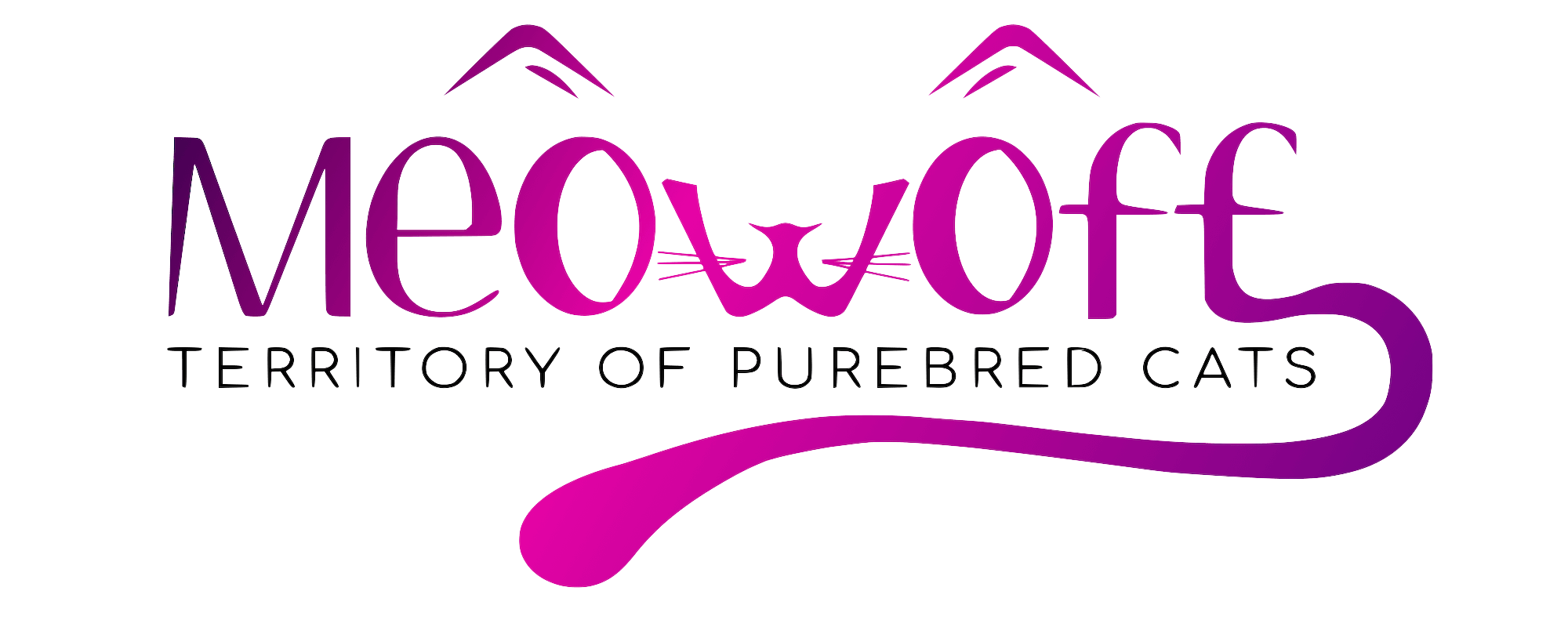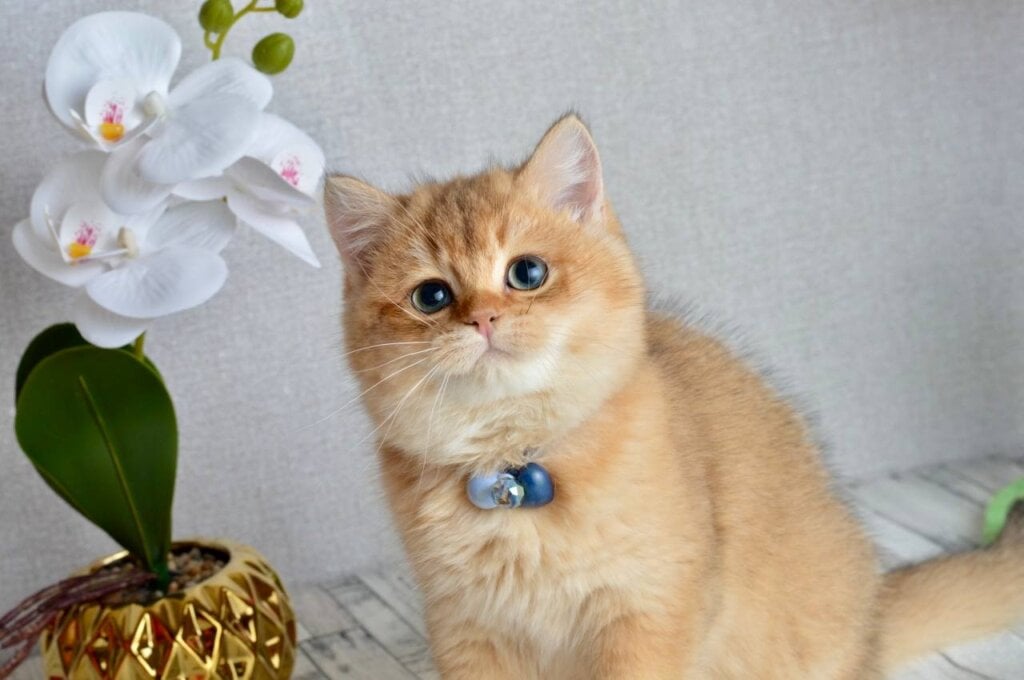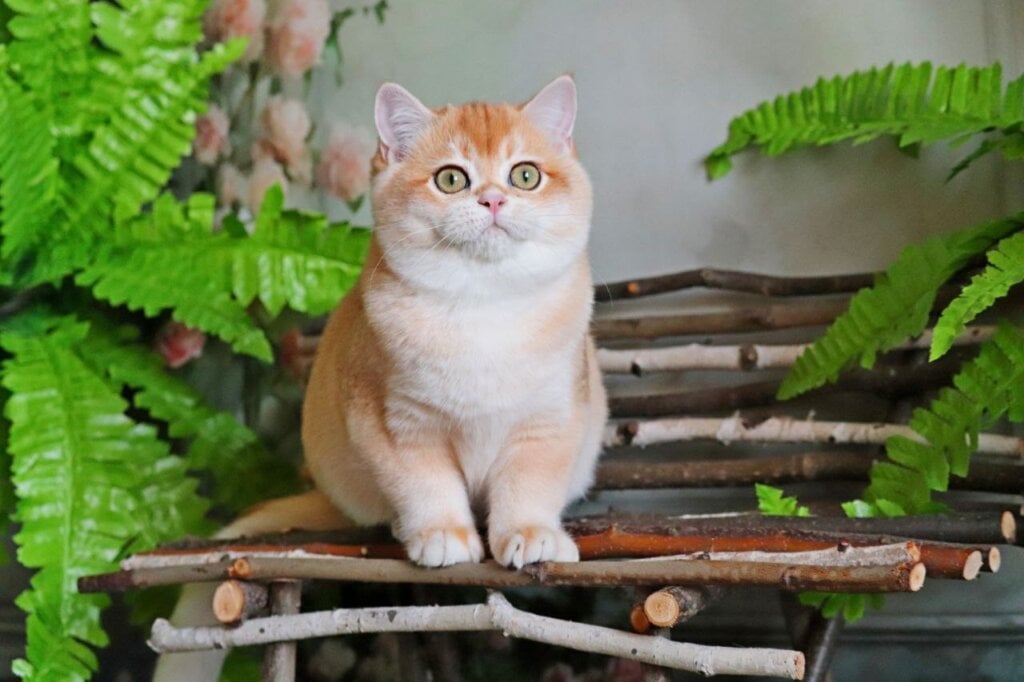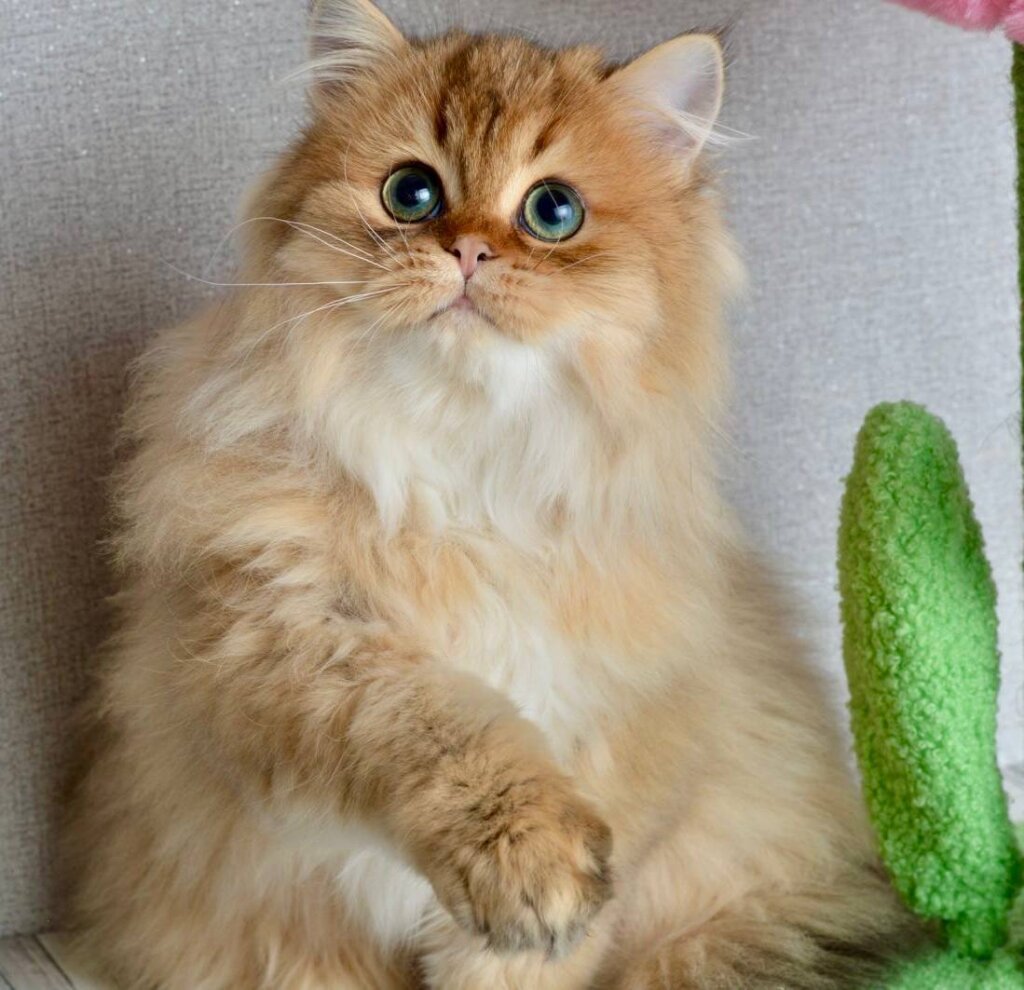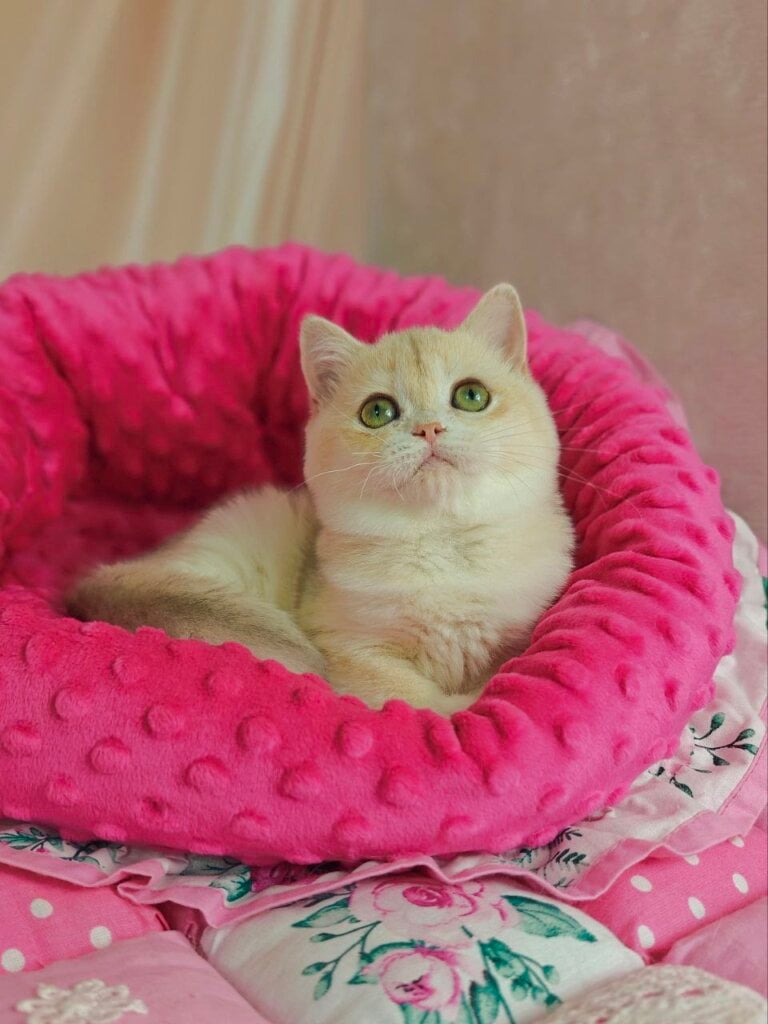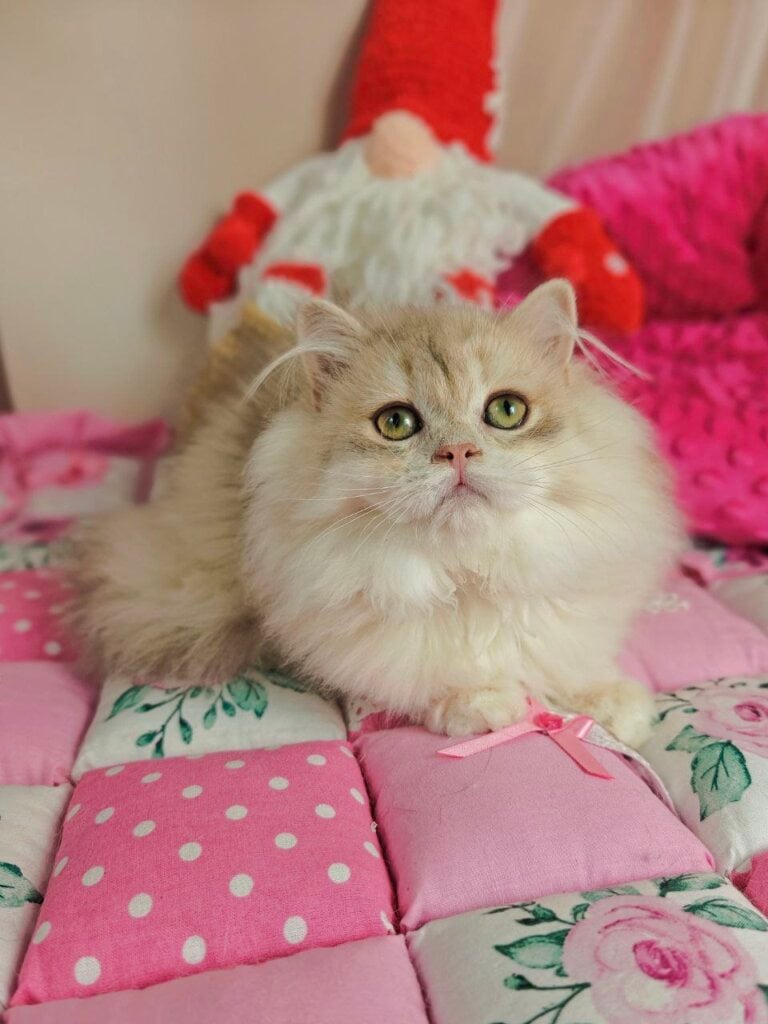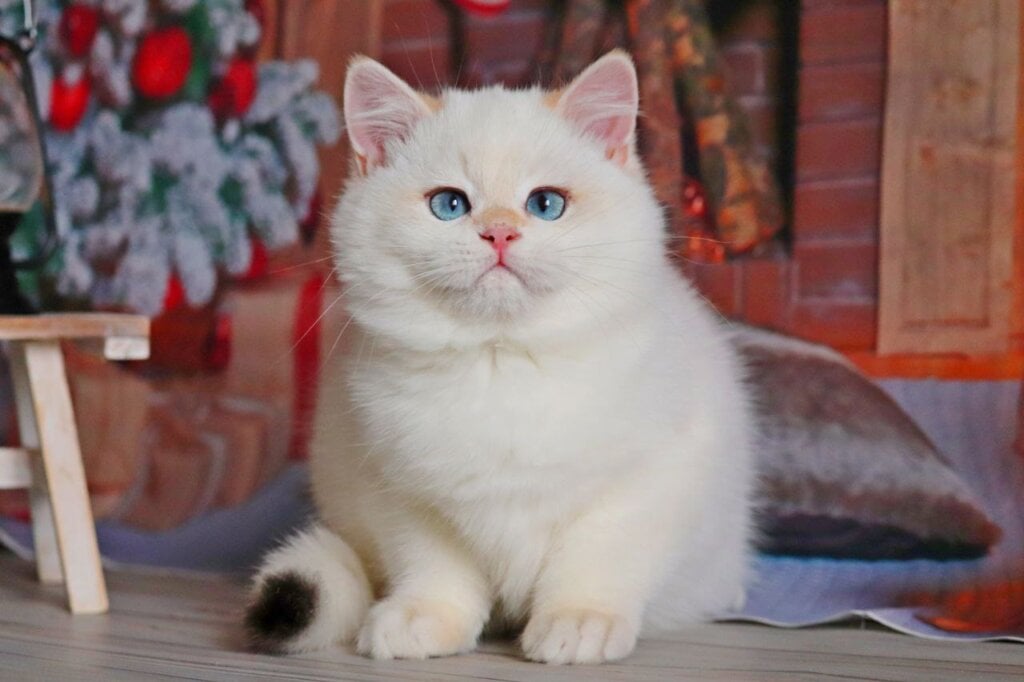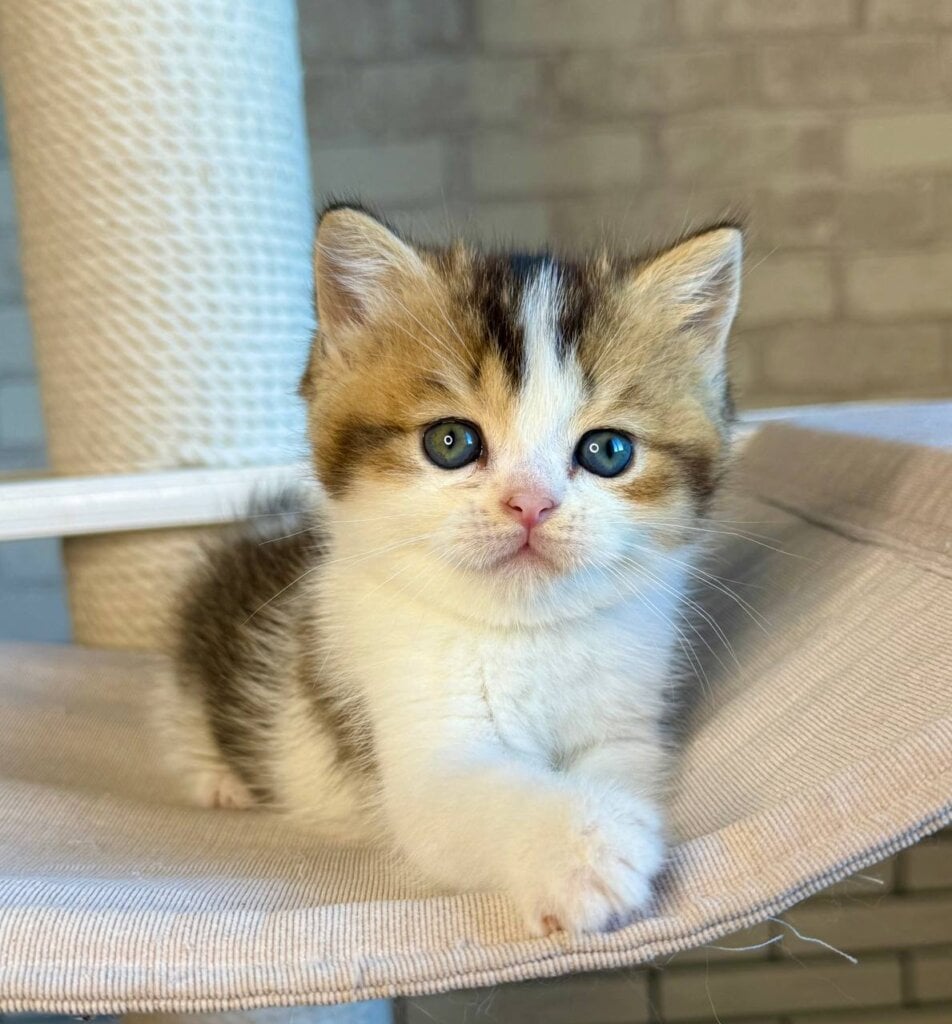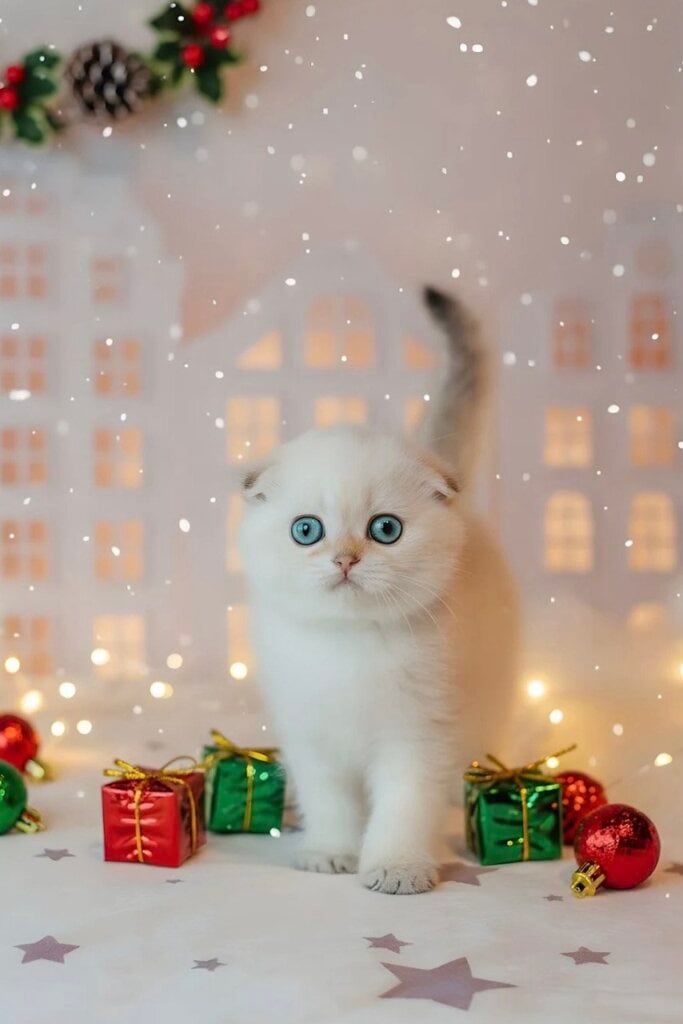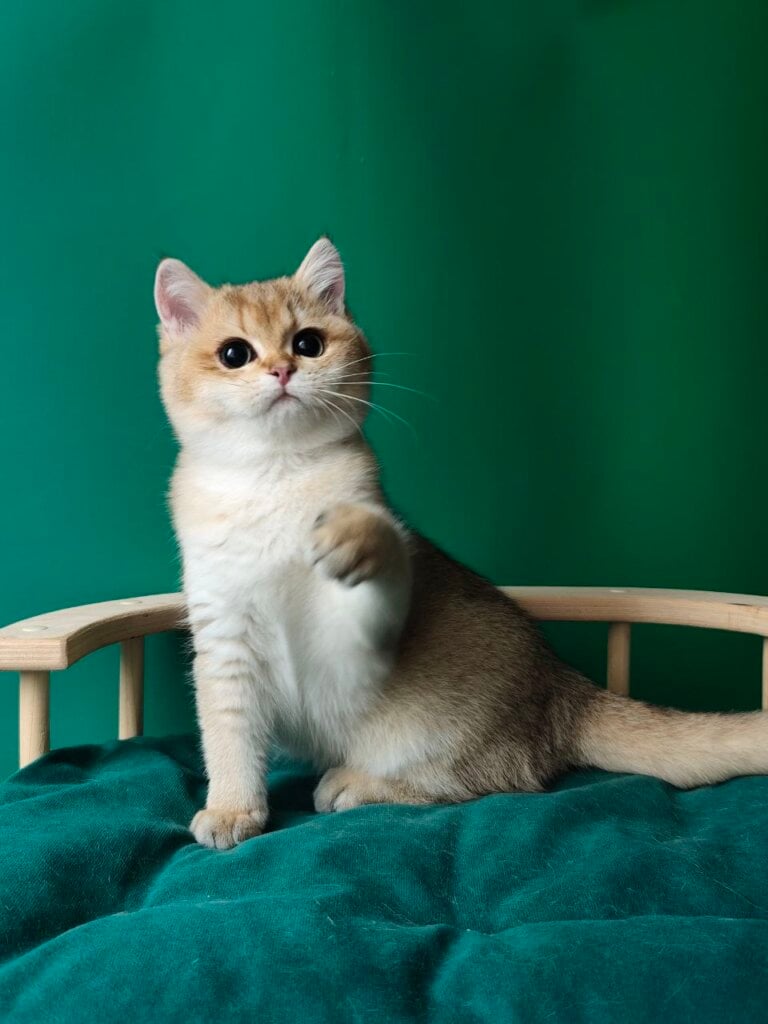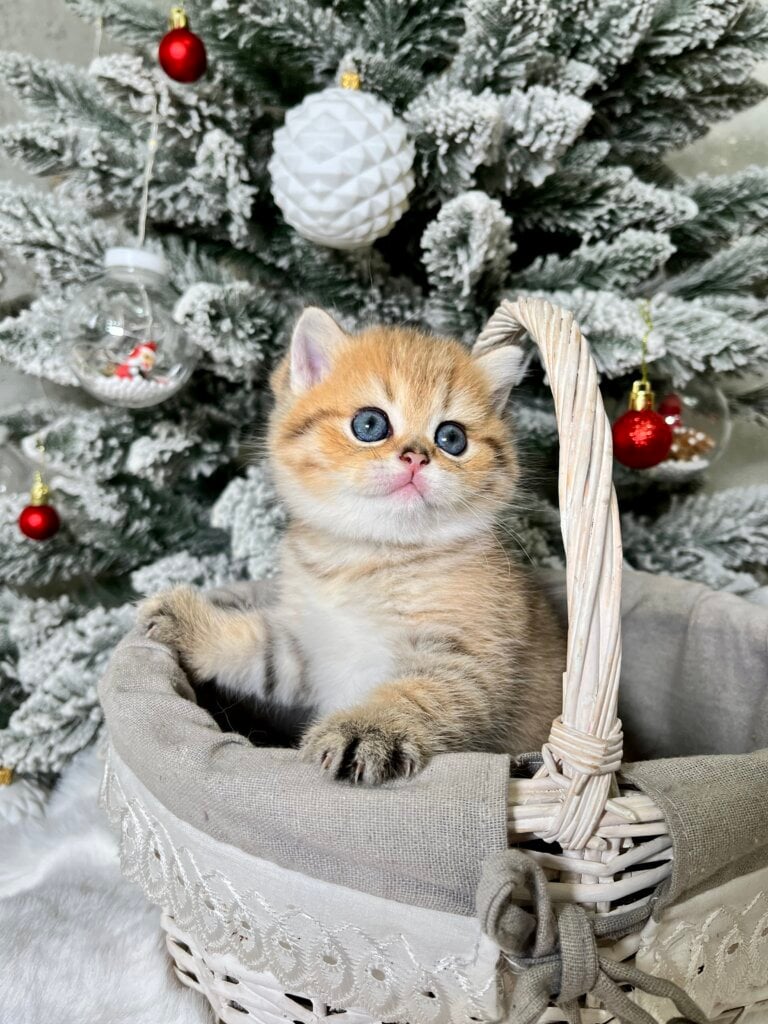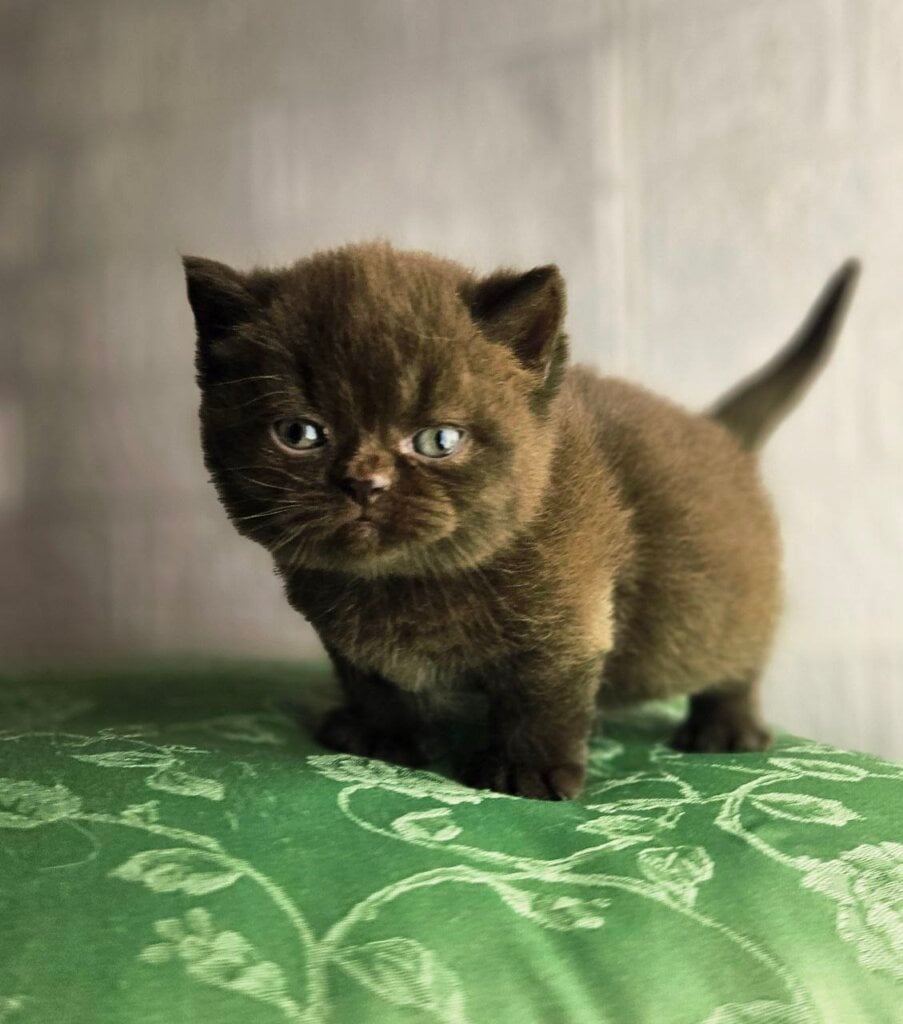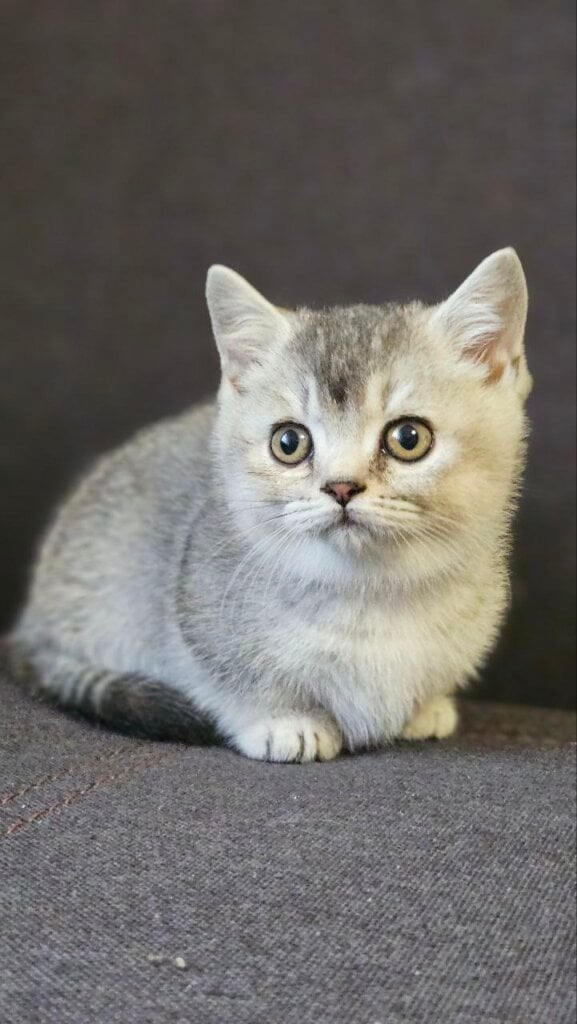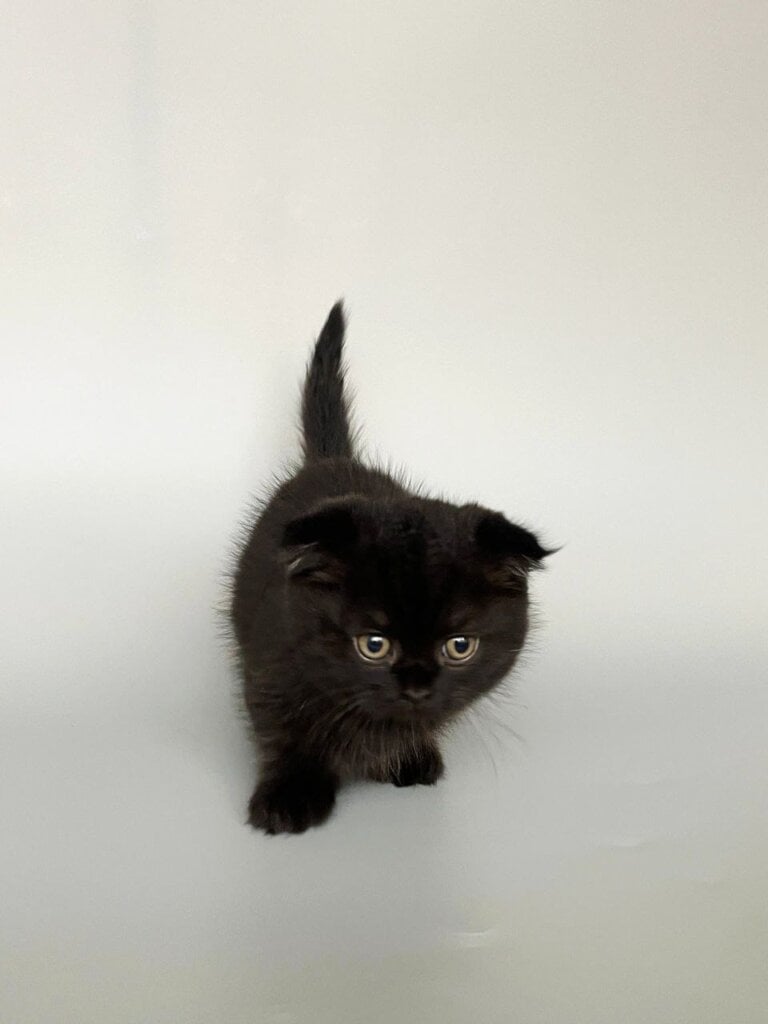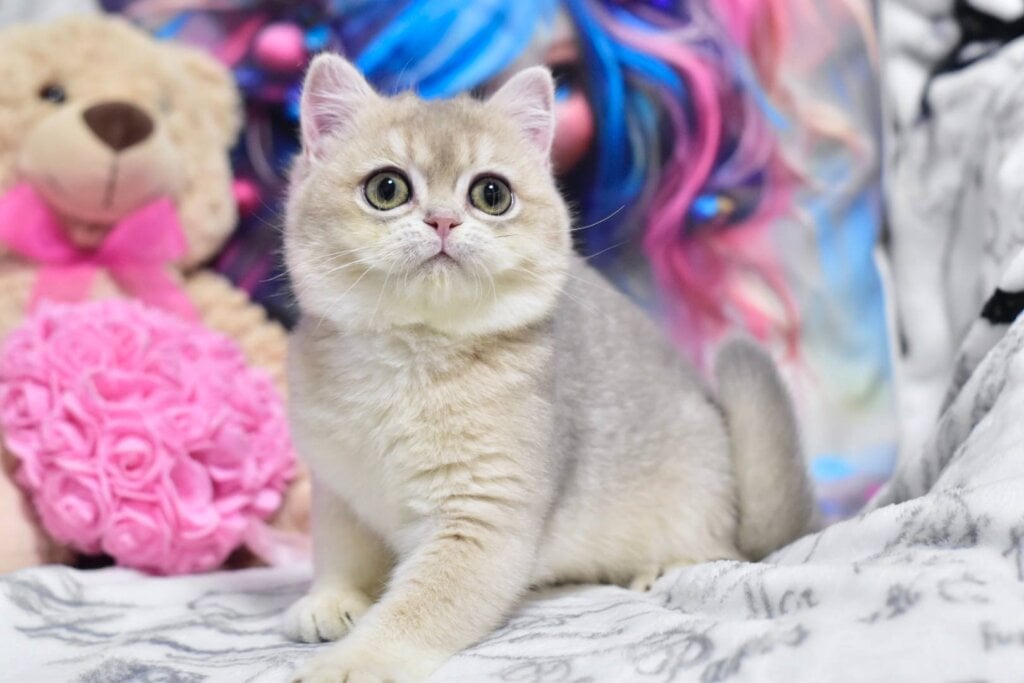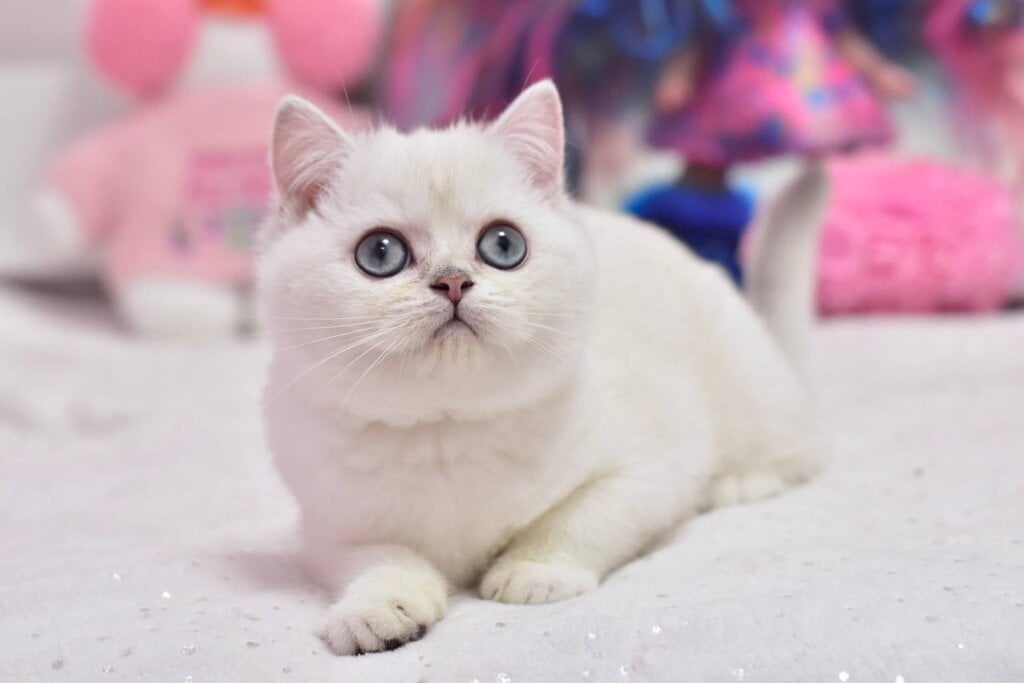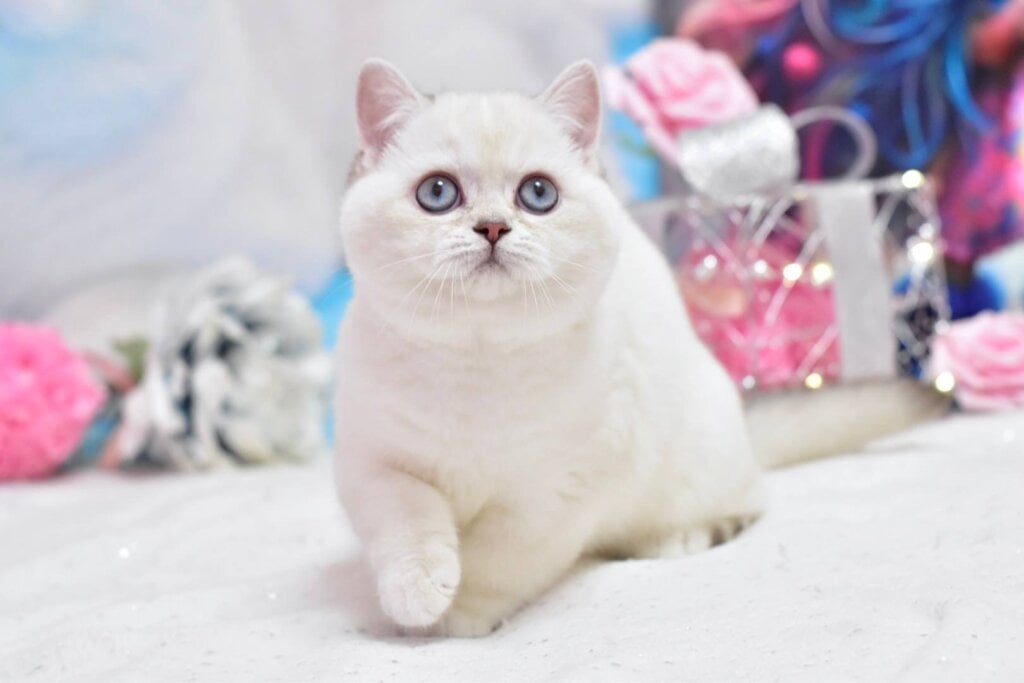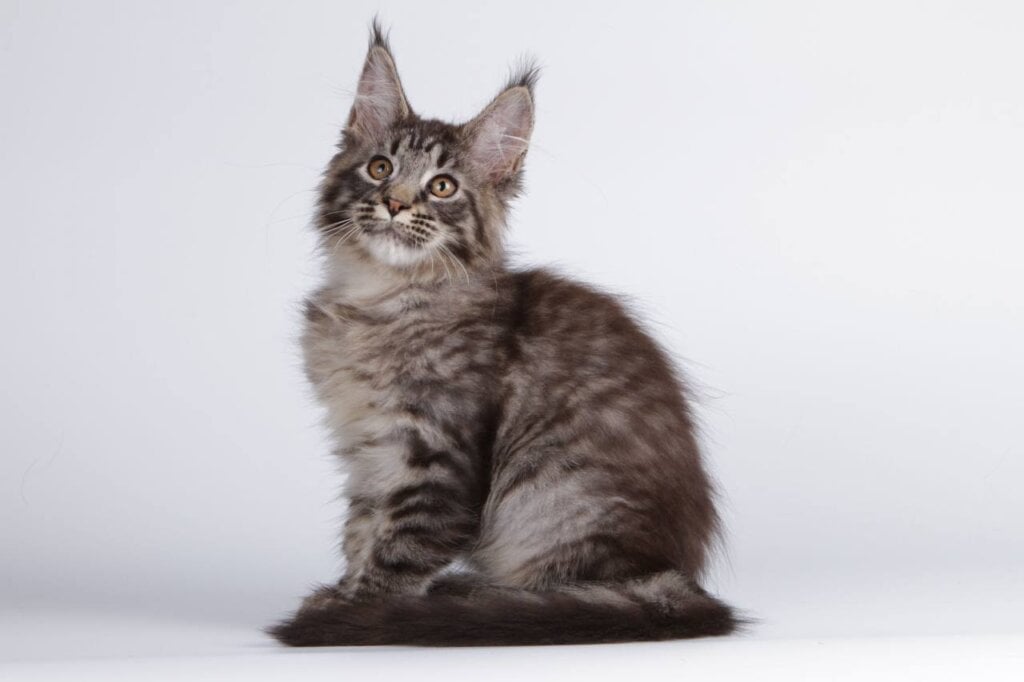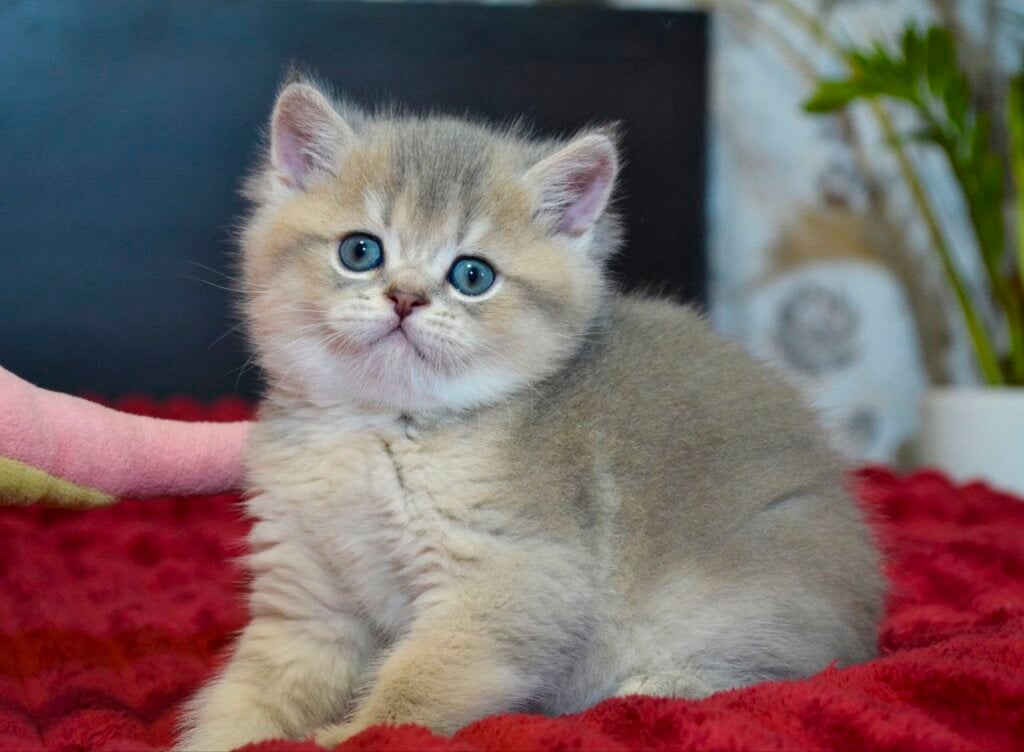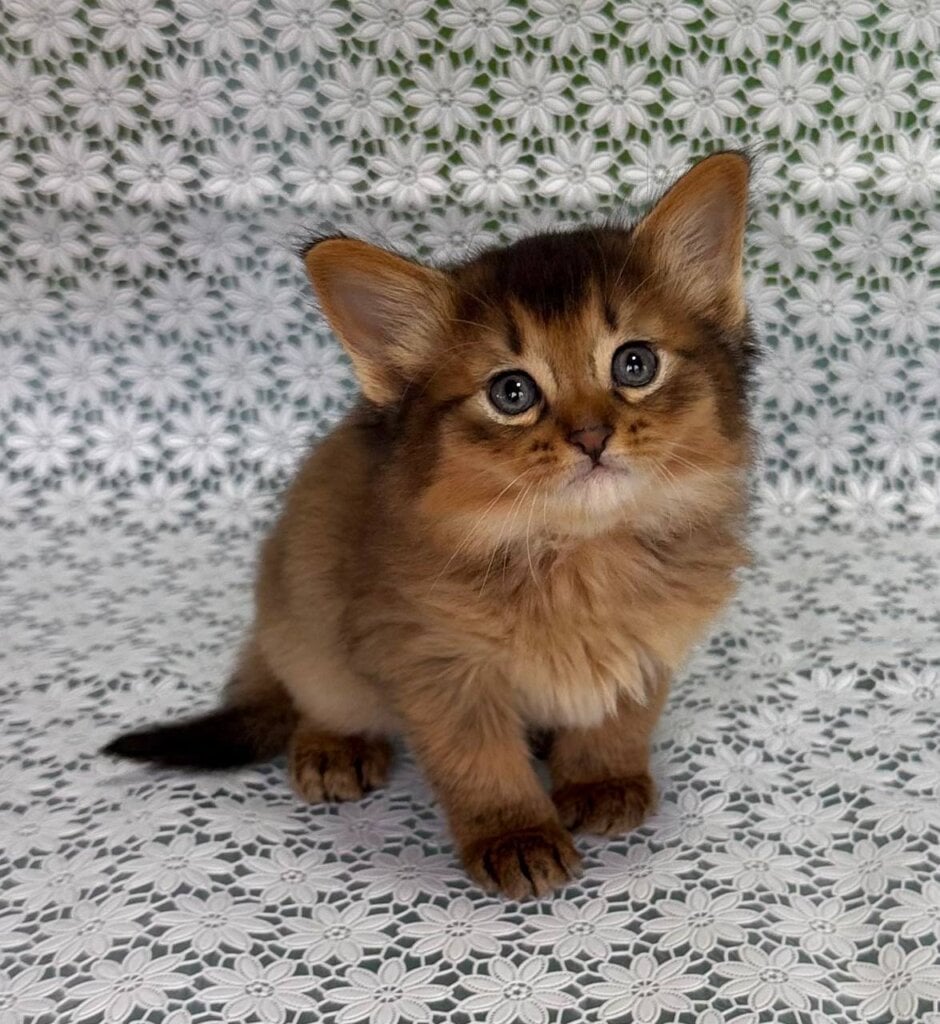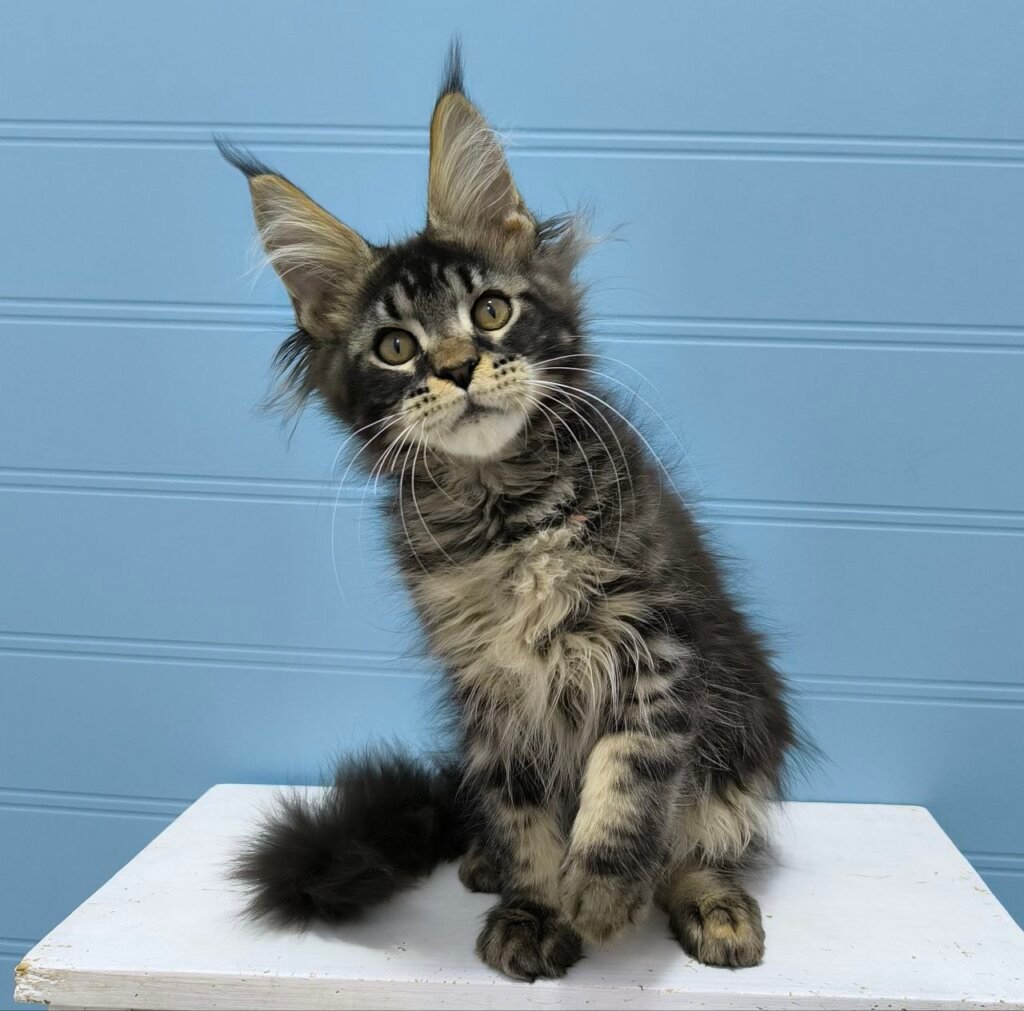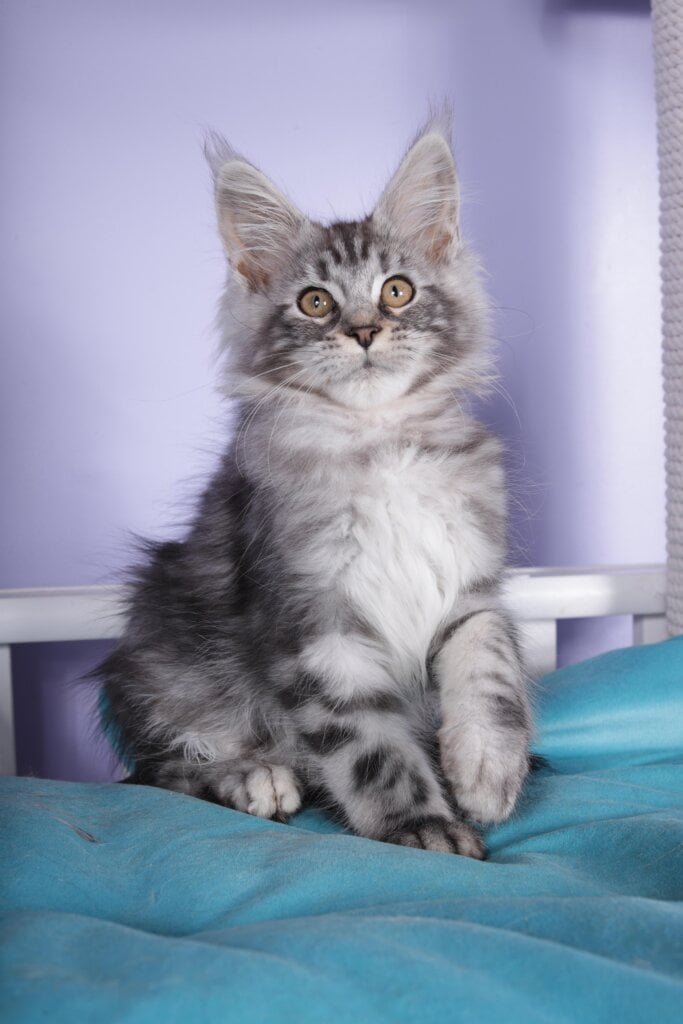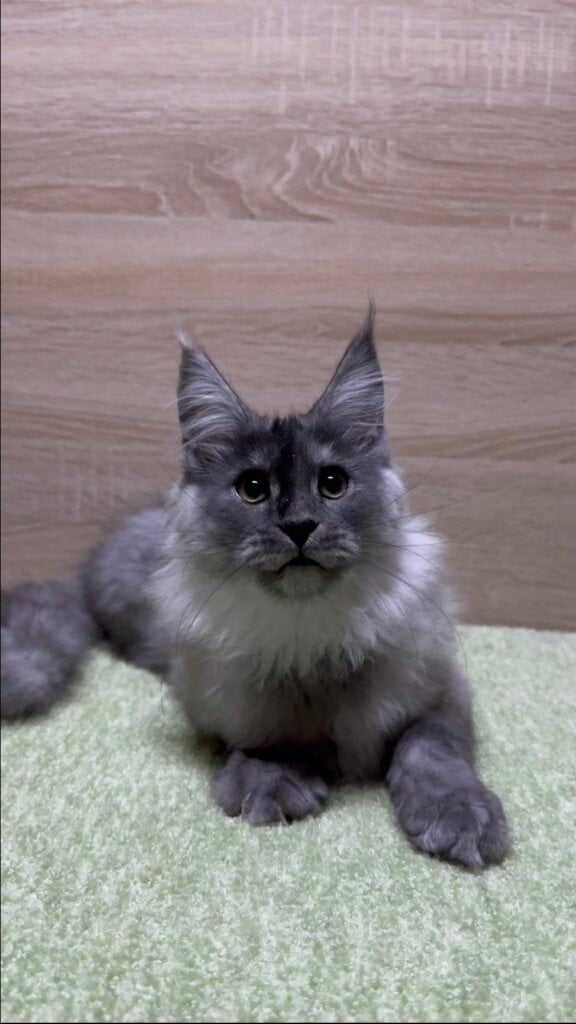- Hereditary factors play a large role in Maine Coon colors. Basic color genes, dilution genes, and tabby, silver, smoke, tortoiseshell patterns, etc. By knowing these genetics we can better predict strikingly beautiful coat patterns and one of a kind color variations.
- A Maine Coon Color Calculator is a useful resource that foresees possible future kitten coat colors depending on their parents’ genetics. It transforms complicated genetic information into easy to understand predictions for breeders and cat enthusiasts.
- To use a color calculator effectively, gather accurate parent color information, identify genetic markers, input the data, and interpret results carefully. Remember to account for a margin of error, as genetic intricacies may lead to unexpected results.
- This tool supports our breeders, helping them plan mating strategies, predict future kittens’ colors, and prevent unwanted combinations from occurring. It’s saving lives and it is helping owners more fully understand their cat’s genetic makeup.
- As useful as the calculator is, it has some serious limitations. Epigenetics, genetic rarity, and environmental factors all can lead to surprising results. Consider it a starting point, not a holy grail.
- Advancements in color calculators will increase accuracy and functionality. With the continuing advances in genetic research, these tools will only get more reliable and provide more insight.
Maine Coon Coat Color Genetics
This is where it gets exciting. Maine Coons show off a dazzling array of color and patterns due to the combination of several genetic influences. Understanding these genes helps breeders predict potential outcomes and offers a deeper appreciation for the genetic complexity behind these majestic cats.
Basic Color Genes (Black/Red)
The foundation of Maine Coon colors lies in the two primary pigments: eumelanin (black) and pheomelanin (red). As you can see from the chart below, a Maine Coon’s coat color begins with either black (BB) or red (OO for females, O for males) pigments.
This is because female Maine Coons can inherit both black and red genes. That’s because they have two X chromosomes. This distinctive genetic pairing allows for stunning patterns such as tortoiseshell and calico.
Additionally, males, with their XY chromosomes, will express either black or red. This genetic architecture would account for tortoiseshell and calico patterns to exist almost exclusively in females.
Dilution Genes (Blue/Cream)
Dilution genes work to change the intensity of coat colors. Black coats, when the effect of these recessive genes are factored in, become blue (a diluted gray color).
In the same way, red coats turn into cream. In order for these diluted colors to appear, a kitten needs to receive two copies of the recessive dilution gene (dd). Without it, the original black or red pigment survives.
Tabby Patterns Explained
The Agouti gene (A or a) is responsible for if the Maine Coon will have tabby on their coat. When the gene is expressed, the coat has distinct bands of color running up and down each hair shaft.
This leads to impressive striped, spotted or mackerel tabby patterns. A non-agouti gene (aa) gives us a solid-colored Maine Coon, hiding the tabby pattern that would have shown.
White Spotting Gene
The white spotting gene (S) plays a role in the presence and extent of white patches on a Maine Coon’s coat. The markings are often quite subtle, such as a splash of white on the chest or paws.
They can be larger still, with bicolor patterns or van patterns, almost entirely white with color on the head and tail.
Silver and Smoke Variations
The I gene is responsible for producing silver and smoke coats. This gene inhibits pigment production in the shaft of the hair.
That unique shimmering quality immediately catches the attention. Silver cats show excellent tabby patterns, whereas smoke cats appear solid until you examine them closely and see their light undercoat.
Tortoiseshell and Calico Cats
A tortoiseshell Maine Coon will have the same combination of colors, black and red, distributed throughout their coat. When one copy of the white spotting gene is present, these cats are known as calico.
Both patterns are equally noticeable and desirable, with black torties sometimes acknowledged for being particularly stunning.
Understanding Color Inheritance
Maine Coon coat color inheritance is a complicated mix of dominant and recessive genes.
GENOTYPE VS PHENOTYPE
Although genotype is what a cat is carrying genetically under the surface, phenotype (expressed traits) is what makes the end product.
By breeding Maine Coons with known or traceable genetic backgrounds, it is possible to more accurately predict what coat colors will appear in a litter.
What is a Maine Coon Color Calculator?
A Maine Coon color calculator is an innovative tool designed for breeders and cat enthusiasts to predict the coat colors and patterns of Maine Coon kittens. Through the examination of genetic data, it yields powerful predictions about the potential results from a mating.
The tool unravels the genetics behind Maine Coon colors in a fun and engaging manner. Most importantly, it gives us a better understanding of how these specific traits are inherited and how they are expressed in cats. Read on to learn more about how this tool works and what you can do to help it make accurate predictions.
1. Define Color Calculator Purpose
A Maine Coon color calculator is a useful tool for breeders to determine what coat colors and patterns they can expect from their litters of Maine Coon kittens. It accomplishes this by reading their genetic codes.
This educational resource helps breeders like you learn how to predict what their future litters will look like. It further allows them to breed towards certain standards of pedigree characteristics.
It’s a handy resource for Maine Coon owners curious about their cat’s unique coloring or those exploring the genetic lineage of their pets. What once was a daunting task, this tool makes easy, providing insight with genetic codes and patterns.
2. How Calculator Predicts Colors
The Maine Coon Color calculator works through a coding system that uses letters and numbers to identify individual color characteristics. For example, a code such as “ns 09 25” would denote a black silver ticked tabby with white.
Enter in the genetic data of your cattery sweethearts, and the calculator goes to work! It gives predictions for possible combinations, such as black, blue, red (confused frequently with orange), and cream base colors.
It includes consideration for patterns like classic, mackerel, and ticked tabbies, giving a very comprehensive view of what they could come out looking like.
3. Factors Influencing Color Prediction
Several variables influence the prediction rendered by the calculator. An important factor is the presence of dominant and recessive genes, as dominant traits such as tabby patterns may be more common.
Modifier genes can have a huge impact on coat patterns, too. For example, modifier genes are responsible for producing the tortoiseshell coat pattern or torbie variations.
Other influences are the undercoat, like the smoke and silver undercoat to create depth to the coat coloring.
4. Genetic Variations and Outcomes
This genetic diversity combined with the Maine Coons’ propensity for unpredictable surprises creates an exciting range of possibilities. Such as torties (tortoiseshell) and torbies (tortoise-shell tabby) which are created from special genetic combinations where red and black pigments interact.
The calculator aids in decoding these differences, providing a better understanding of unique and beautiful color combinations that would otherwise go unappreciated.
5. Required Inputs for Accurate Prediction
For the most reliable results, the calculator needs specific information, such as the genetic codes of both parent cats. These codes, such as “gss111,” are what enable the tool to locate the closest fit.
For example, “gs 11” indicates a blue-cream coat with shading. Knowing the parent’s tabby patterns and undercoat colors, like smoke or silver, increases the prediction accuracy.
This data helps to paint a broader picture of the expected litter.
Use the Maine Coon Color Calculator
The Maine Coon color calculator is a very useful tool. The Maine Coon Color Calculator explores the DNA of your purebred Maine Coon parents to predict what coat colors and patterns might show up in their kittens. This resource breaks down complicated genetic concepts to help you grasp how specific combinations can affect a cat’s appearance.
Gather Parent Color Information
First, go through and determine all of your parent cats’ possible coat colors and patterns. This step is essential to building models capable of making accurate predictions. Maine Coons are known for their varied and beautiful coat colors such as solid, tabby, and shaded.
They can show unusual combinations such as “ns 09 25” where “n” is black, “s” is silver, “09” is white and “25” is ticked tabby. Colors like chocolate, fawn, cinnamon, and color point patterns are not recognized by the calculator. This is because these colors are complex and rare in the genetics of Maine Coons.
Enter parent color information clearly and specifically to guarantee the most accurate results.
Identify Known Genetic Markers
Once you have determined the parent colors, focus on the main genetic markers responsible for coat characteristics. Markers such as the “d” for dilution change the blue and cream colors of the kittens’ coats. Or the “s” marker for silver or smoke, which can significantly change its overall look.
For instance, if one parent carries the “d” dilution marker the kittens will be diluted colorwise if the other parent carries the marker. With samples like “gss111,” which matches best to “gs 11,” it’s possible to start cracking the cryptic genetic codes.
These markers offer a richer understanding of possible combinations.
Input Data into the Calculator
Once you’ve collected and interpreted the genetic data, enter the information into the Maine Coon Color Calculator. Tools like these are intended to streamline the process by cross-referencing genetic data, eliminating guess work.
Calculators such as the one at PawPeds are widely used by breeders. Some of that source data was unverified by peers. Essentially, this means the resulting calculations should be understood as a well-informed approximation, not a hard and fast conclusion.
Interpret the Results
The resulting calculator will show you what the most likely coat color/pattern will be in these kittens. Output expected from human AI model results will look like “ns 25” (silver ticked tabby) or “n 09” (black with white).
These results are consistent with the genetic characteristics that were inputted. Education and interpretation of the results helps breeders and cat owners know what to expect their planned kittens to look like with greater certainty.
Account for Potential Variations
Lastly, remember that nature loves to throw a wild card into the equation. Similarly, although the calculator has a very high predictive value, great genetic diversity can sometimes yield surprising outcomes.
Slight variations from the predicted outcomes may be due to environmental factors, recessive environmental factors or incomplete genetic data.
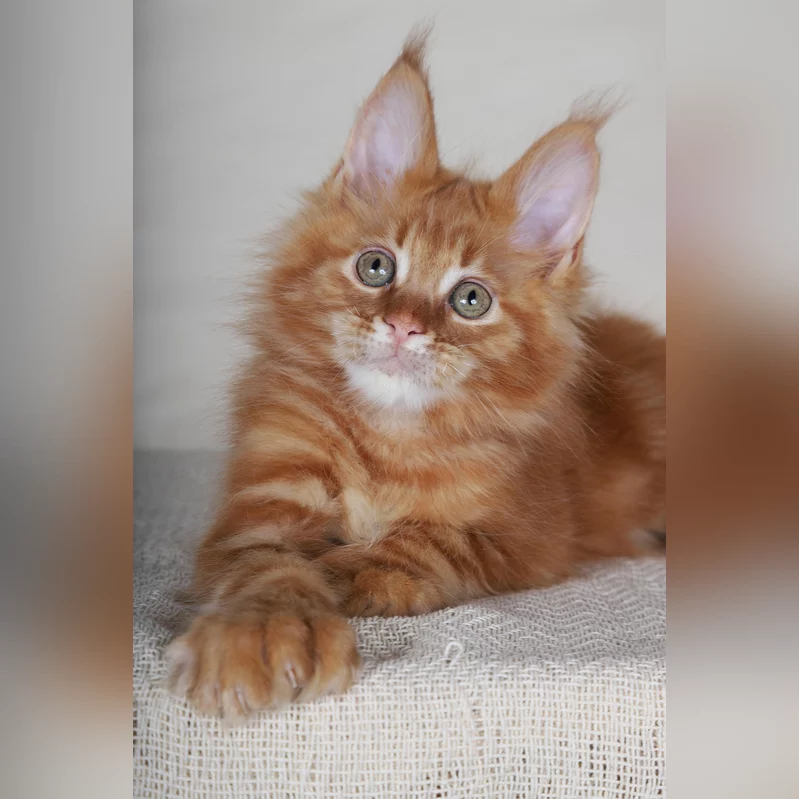
Benefits for Breeders and Owners
Real benefits color calculators make life easier for Maine Coon breeders and owners. They increase accuracy of coat color predictions and improve breeding practices. These tools combine science with usability, helping breeders make informed decisions while giving owners insight into their future kitten’s appearance.
Plan Mating Strategies
A Maine Coon color calculator is an indispensable tool to help you plan breedings that achieve the traits you want. Breeders can enter in the coat color and pattern of the parent cats. This helps them forecast possible results and better plan their breeding programs.
Mating a black Maine Coon with a silver tabby could produce kittens of various colors. You could observe anything from all solid black to all silver tabby, due to the genetics of both mom and dad. This level of foresight helps breeders achieve specific goals, whether they are aiming to highlight rare patterns like smoke or maintain classic looks like brown tabby.
It helps breeders to maintain important genetic diversity while still producing kittens with desired breed characteristics. With the right strategy, breeders can maintain healthy bloodlines and create litters that match market demand, ultimately enhancing their reputation and the value of their cattery.
Predict Kitten Coat Colors
A color calculator can help take the guesswork out of trying to determine what your kittens will look like. For prospective owners, that means they can better understand which genetic traits their future pet is likely going to have.
An owner who loves the striking contrast of a tortoiseshell pattern or the elegance of a blue Maine Coon can see the likelihood of these colors before committing to a kitten. This newfound transparency fosters greater trust between breeders and buyers, since both parties have a clearer sense of what to expect.
Understand Genetic Possibilities
Color calculators are based in genetics, which makes them a great educational resource. They illustrate the interaction between dominant and recessive genes. This provides breeders and owners with a cool look into the genetic science behind different coat colors.
A black Maine Coon could carry the recessive red or cream color genes. If it finds a suitable breeding partner, its colors might be expressed in its children. Recognizing these opportunities helps us all develop a better understanding of the breed’s diversity and complexity.
Avoid Undesirable Color Combinations
Breeders can leverage these tools to circumvent undesirable combinations. This allows them to stay in-tune with the evolving breed standards and desires of breed aficionados.
Take color, for instance, as some color combinations can wash out deep colors or cause clashing print designs. Breeders have the opportunity to produce gorgeous kittens by simply avoiding the unfortunate result. This approach highlights the best features of the Maine Coon breed.
Limitations and Accuracy
Maine Coon color calculators are fascinating resources for estimating possible coat colors, but it’s important to know their limitations. Though these tools provide an exciting method to research genetic outcomes, their limitations warrant consideration. Many factors can affect their accuracy, from genetic complexity to the effects of the environment, and understanding these subtleties helps set appropriate expectations.
Potential Margins of Error
While Maine Coon color calculators use the probabilities of genetics, there are no set predictions. Compounding factors, for example undocumented pedigree or recessive alleles, can result in surprises. Such a parent would be an obvious choice to produce a black-coated kitten.
Recessive traits, such as red or cream, can still come through if they are hiding in the pedigree. Since each parent contributes a completely different combination of genes, this process introduces genetic variability. No calculator can factor in every genetic what-if.
Rare Color Combinations
Add in the wildcards of uncommon coat colors, like smoke or cameo, and you can see there’s another fresh layer of caprice! These combinations are majorities the result of a few gene interactions that are not as frequent within the breed.
So, for example, when producing a silver Maine Coon, you need a specific combination of the inhibitor gene with a solid color base. Those unexpected, rare moments are hard to predict, illustrating the difficulty of forecasting those less common, pronounced positive results.
Environmental Influences
Although genetics are indeed the leading factor, the environment may influence the coat without you even realizing it. An obvious example is nutrition, which plays a big role in the vibrancy and texture of a Maine Coon’s long flowing coat.
An ideal diet containing at least 40% animal protein supports healthy coat development, but inadequate nutrition could dull the expected color. Sun exposure can make some of the darker coats fade as they get older, making them appear a bit different from their youth.
Epigenetic Factors Impact
Beyond the study of genes themselves, epigenetics adds to this layer of complexity. Epigenetic changes happen when environmental or developmental factors affect the way genes are regulated and expressed.
These changes may lead to differences that calculators cannot predict. As your Maine Coon kitten develops, you may notice some slight changes to their coat. You’ll start to see its complete physical characteristics, such as eventual adult size, take shape between the ages of three to five years.
Calculator Transparency and Logic
Transparency in how a calculator works is very important. The best ones explain the genetic logic on which their predictions are based, providing users with a glimpse into their rationale.
Even with robust transparency, these tools are based on observed trends, not proven outcomes. Those ancestry variations among Maine Coons, and the breed’s murky origins at best, only add to the difficulty of accuracy.

Case Studies and Comparisons
The Maine Coon color calculator offers a unique way to predict a kitten’s coat color based on the genetics of its parents. This new tool demystifies the complicated science of feline genetics, allowing breeders and prospective pet owners to make informed choices. By comparing its efficiency against classical approaches, we can illustrate how it enhances comprehension and saves time, money, and energy.
Calculator Effectiveness Examples
The calculator is able to make highly accurate predictions based on the observation of parental coat colors and understanding of inheritance patterns. When you breed a black silver Maine Coon with a red tabby, the software calculates how the gene combinations interact. It next estimates the probability that the kittens will have their parents’ standout features.
This precision helps breeders orient their planned litters to desired aesthetics or breed standards. Another case can be found in the color of red Maine Coons, misidentified as “orange”. The new calculator stops calling these pinks – as they are technically known – red, a misnomer that has long confused breeders and cat fanciers alike.
Tobacco Maine Coons whose breeders have stuck with the breed continue to dominate cat shows across the globe. The new calculator simplifies the process to find and breed them, allowing their breathtaking beauty to flourish.
Traditional Methods vs. Calculator
Breeders had to base their estimations of what coat colors they might produce on years of anecdotal experience. For guidance, some looked to a more explicit understanding of Mendelian genetics. These methods, while extremely useful, were time-consuming and volatile in technical expertise.
This is where the calculator fills a major gap, enabling quick, data-driven results without a deep understanding of genetics. For example, identifying rare coat patterns like black silver Maine Coons, which have surged in popularity, would traditionally require generations of trial breeding.
Now, using the new calculator, breeders may be able to more rapidly predict and pursue such beneficial outcomes, making their work more efficient. The tool further contributes to coat health by allowing for better optimization of coat genetics. With the inclusion of up to 20% animal fat in their diets, you will be steps away from producing that glossy, full-density fur and providing natural weight control.
User Feedback and Reviews
The user-feedback has been universally positive, commending the calculator on its realism and precision. Most rave about how it makes breeding decisions a lot easier, particularly for hobbyists just starting to learn about Maine Coon genetics.
Owners love how it works with other tools of care, like pet diets such as Untamed, to compound positive results. Cats on these diets lose muscle mass and improve coat condition within a matter of weeks. This lowers shedding, making their pronounced coat quality more aesthetically pleasing.
Future Advancements
Technology and genetic research is evolving very quickly. Maine Coon color calculator Looking forward Future improvements hold swathes of promise for refinement, expansion, and racial inclusivity. Collectively, these improvements are sure to make the tool more accurate, adaptable and in accord with the state of science. Below, we break down the most influential areas where future advances can improve its potential.
Improve Predictive Accuracy
The best Maine Coon color calculators are those that can correctly interpret genetic information. With a trusted calculator you can have confidence that the results will be positive. Future iterations of the tool might introduce genetic markers with greater specificity, notably targeting recessive traits that are frequently overlooked or undetected.
It allows for better representation of genes that produce more rare patterns, such as shaded or ticked tabby. This advancement could allow for even more tailored predictions. The calculator uses cutting-edge algorithms.
It can take environmental factors into consideration, which may subtly impact coat appearance – like seasonal variation in fur density or amount of sun exposure. This precision would help breeders and pet owners understand not only the genetic possibilities but the practical realities of a kitten’s appearance as it matures.
Enhance Functionality
The second, equally promising area of focus is expanding the usability of the calculator. Incorporating elements such as interactive infographics would provide users more contextualization to help inform them of their results.
For instance, you might create a gallery of coat patterns or colors through photos or 3D models. By taking this immersive approach, the overall experience would be more engaging and educational.
Adding functionality to predict eye color, which is impacted by genetics, would make the tool even better. An intuitive interface designed to empower first-time pet owners and large-scale breeders alike would help level the playing field.
Simple input fields for genetic codes, paired with detailed explanations in layman’s terms, would make the tool accessible to a broader audience while maintaining its scientific rigor.
Incorporate New Genetic Discoveries
The science of genetics is an ever-evolving field, recently revealing insight into a host of feline coat colors and patterns. Adding these findings to the calculator makes sure it’s using the most up-to-date and accurate information.
For example, recent studies on polygenes, which interact with primary coat color genes, could refine predictions for hues and intensity. Future releases will add genetic predispositions for health-related phenotypes linked to each color.
This will offer well-intentioned breeders who are committed to responsible breeding practices a clearer picture.
Coat Color Significance
The hues of the Maine Coon are striking. They provide intriguing windows into the breed’s genetics, grooming requirements, and ability to obtain show recognition. Each coat color variation has its unique beauty and importance, further influencing these sublime felines’ allure and attractiveness.
Breed Identification
Maine Coons come in every coat color and pattern, and each has its own special identifier. Coco, the black and white Maine Coon, is an equally striking example of a bi-color beauty. Its dramatic oppositions further define and beautify its individual marvels.
Silvers coated Maine Coons have a breathtaking silvery shimmer. When the base of its fur is light enough, they fall into the category of “smoke.” This difference is important for those who want to call out particular characteristics in the breed.
Even solid-colored Maine Coons have important features. A red solid Maine Coon shows off his color brilliance. Unlike most other variations, it does not have the white skull muzzle, making it all the more unique.
The black smoke tortie Maine Coon offers a combination of blue (commonly referred to as gray) and cream, presenting a beautiful mosaic of colors. We know tabby enthusiasts will be clamoring for the black mackerel tabby Maine Coon. Her dramatic fishbone-like stripes tastefully extend down her body and legs.
Breeding Considerations
Genetics are key to understanding Maine Coon coat color genetics, not only for their unique appearance but their desirability. Silver Maine Coon kittens tend to attract a lot of potential owners. Their unique color makes them the most popular color in a litter.
To achieve these, breeders would need to plan pairings deliberately to produce them (like the rare black silver Maine Coon). Well, this color variety has really taken off! When other specific genetic traits are present, the chances of seeing other colors become less than 1%.
Breeding should require consideration for compatibility and health. Take, for example, coat color significance in Maine Coons. Ensuring genetic diversity within a breed contributes to their strength and health while still keeping their unique color patterns intact.
From our end, careful pairing leads to healthy kittens who are as beautiful as they are healthy.
Show Cat Standards
If your goal in breeding Maine Coons is to have competitors in shows, pay close attention to their coat color and markings. These features are integral to having a competitive show.
Bi-colors, including black and white, need to have very visible markings. Solid colors like red or silver need consistency to be impactful. Patterns like the black mackerel tabby’s intricate stripes or the smoke’s gradient effect often earn high praise for their distinctiveness.
